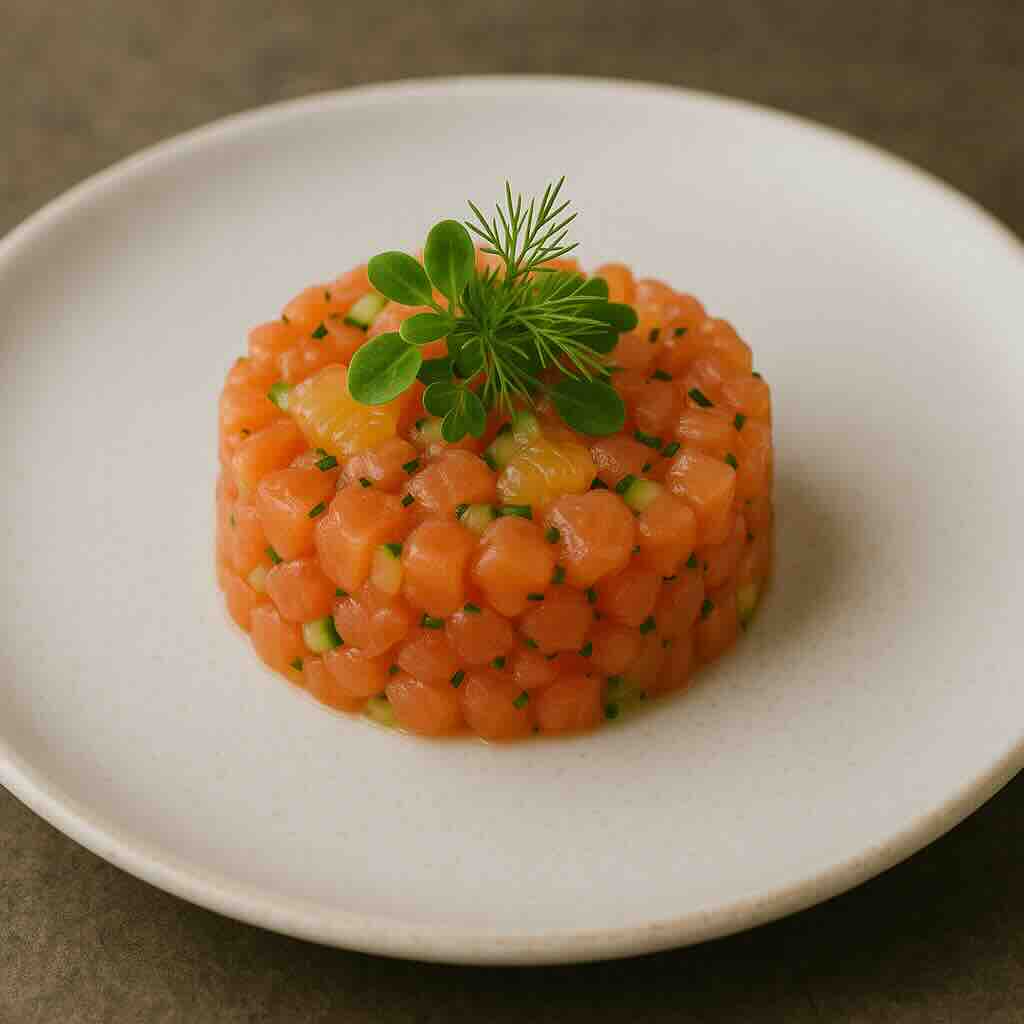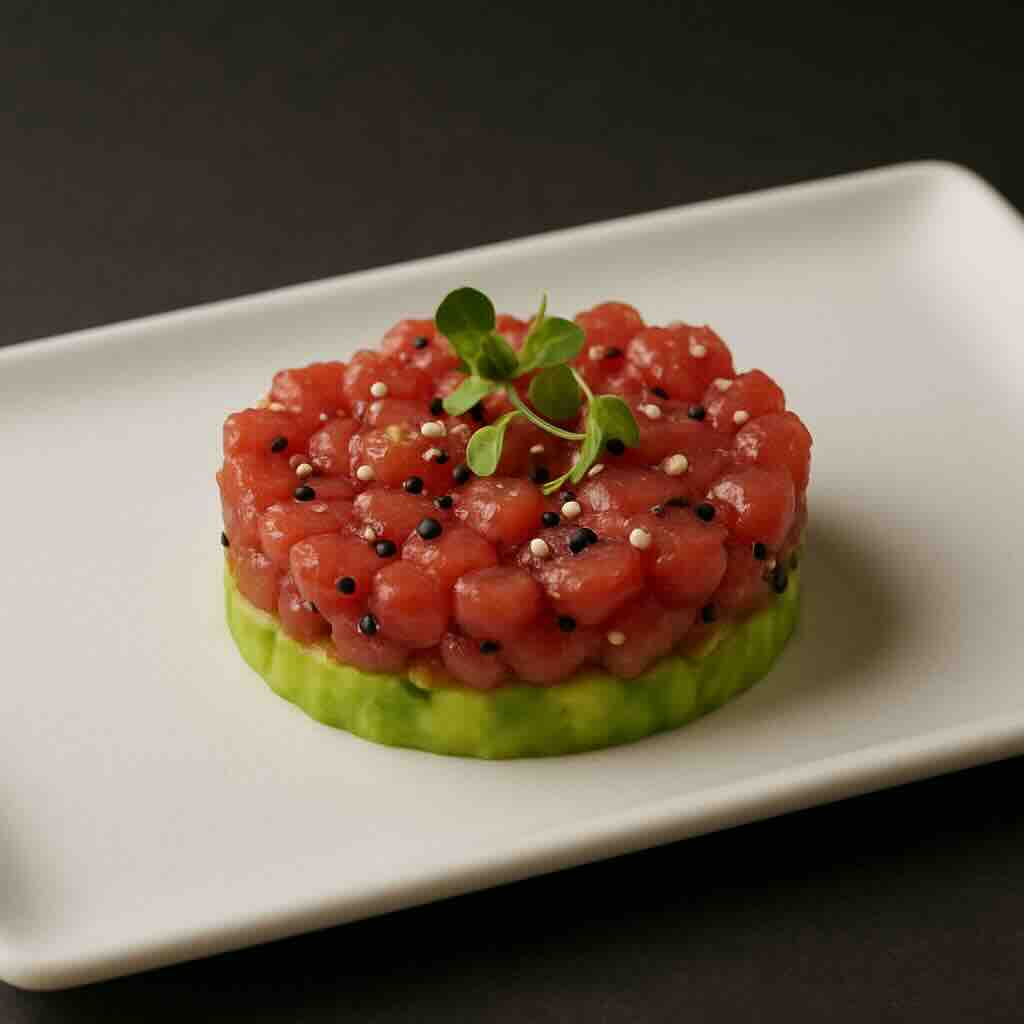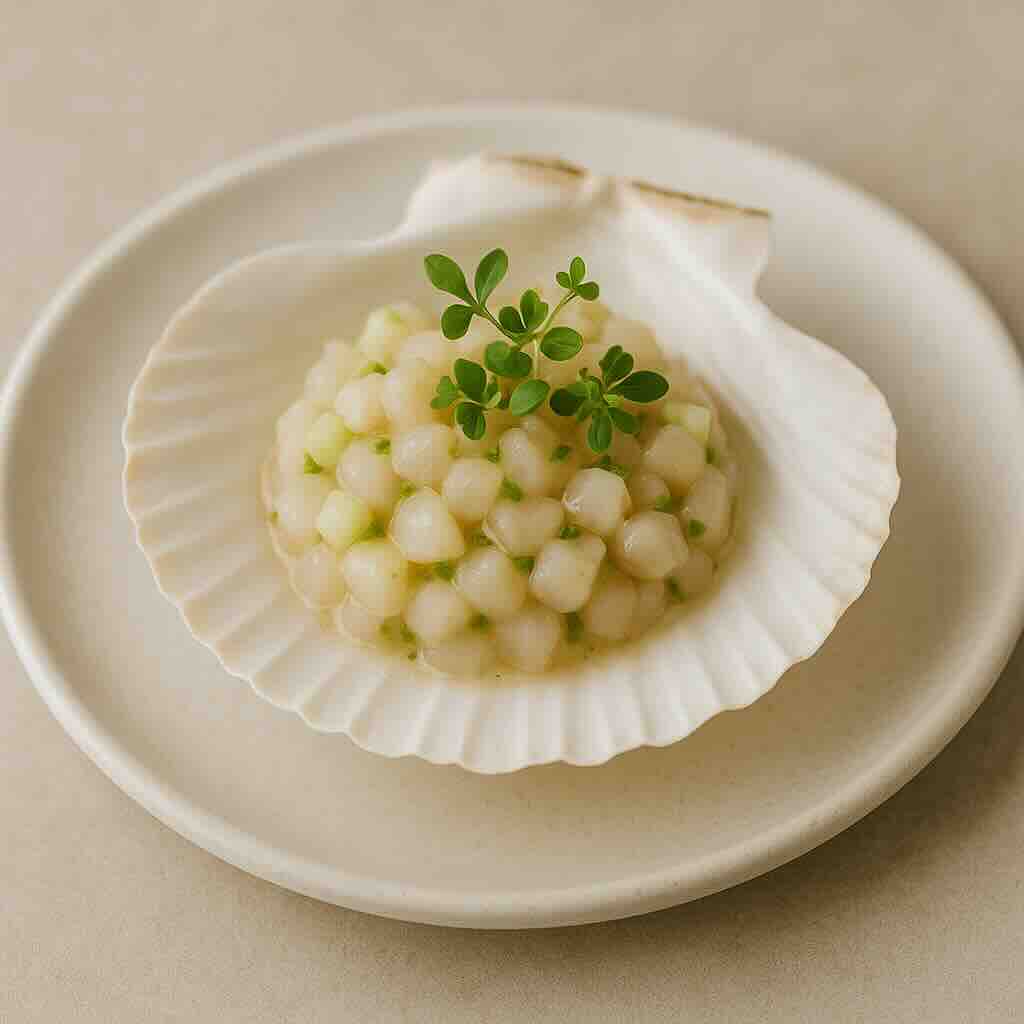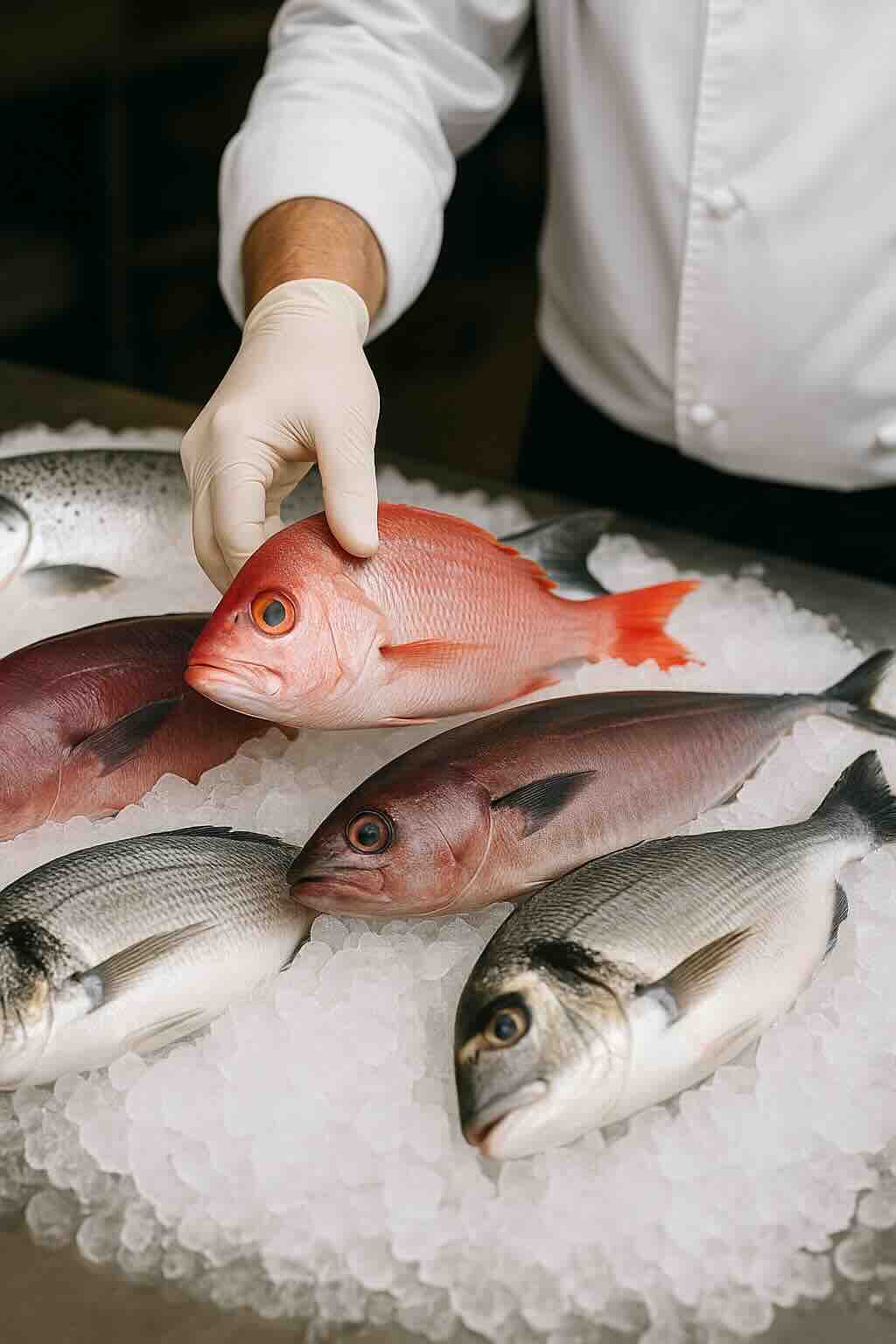Salmon Citrus Tartare

Instructions
- Chill salmon in freezer for 20 minutes to make cutting easier. Remove skin and any pin bones.
- Using a sharp knife, cut salmon into 1/4-inch dice. Work on a chilled cutting board and keep salmon cold.
- Prepare citrus segments: Remove peel and pith from grapefruit and orange, then cut between membranes to release segments. Reserve any juice.
- In a chilled bowl, gently combine diced salmon with minced shallot, cucumber, dill, and capers.
- In a separate bowl, whisk together lime juice, lime zest, olive oil, Dijon mustard, and 2 tablespoons reserved citrus juice. Season with salt and white pepper.
- Drizzle the citrus dressing over the salmon mixture and fold gently to combine. Taste and adjust seasoning.
- Using a ring mold or spoon, divide tartare among 4 chilled plates. Arrange citrus segments around each portion.
- Garnish with microgreens and serve immediately with crispy rye bread or water crackers.
Nutrition Information (per serving)
Calories
245
Protein
24g
Fat
12g
Carbs
12g
Omega-3
1.8g
Vitamin C
45mg

Perfect Tool: Yanagiba Sushi Knife
Achieve paper-thin precision cuts with this traditional Japanese single-bevel blade designed for sashimi.
View on AmazonFrequently Asked Questions
What is sushi-grade salmon?
Sushi-grade refers to fish that has been frozen to FDA specifications to eliminate parasites, then properly handled for raw consumption. Always purchase from a reputable fishmonger.
Can I use farmed salmon?
Yes, high-quality farmed salmon is often safer for raw consumption than wild salmon, as it's less likely to contain parasites. Look for organic or responsibly farmed options.
How long can I store the prepared tartare?
Salmon tartare is best consumed immediately. If necessary, it can be stored covered in the refrigerator for up to 2 hours before serving.
Can I substitute other citrus fruits?
Absolutely! Try blood oranges, tangerines, or pomelo. Each will bring a unique flavor profile to the dish.


